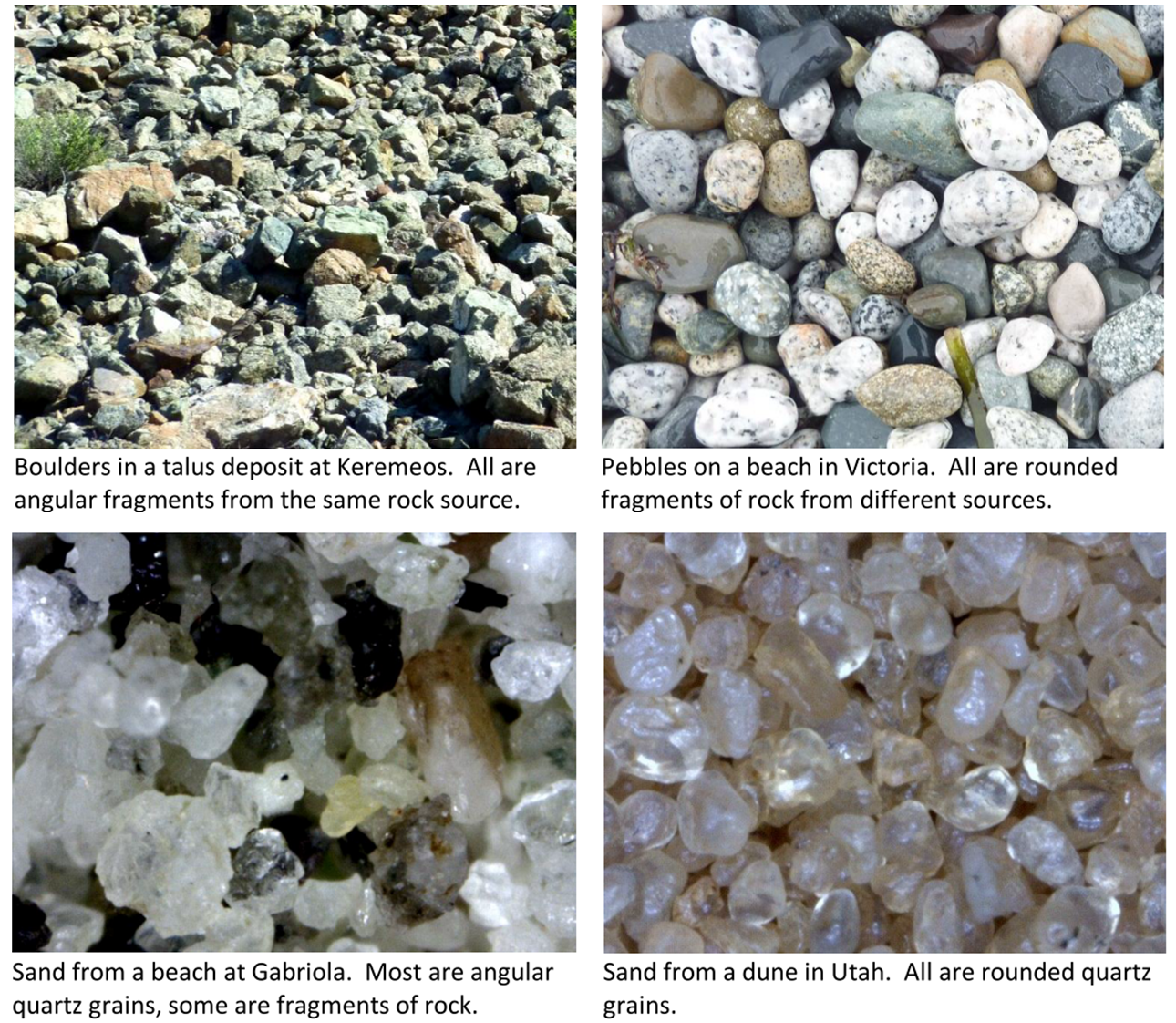6.3 The Products of Weathering and Erosion
The products of weathering and erosion are the unconsolidated materials that we find around us on slopes, beneath, beside and on top of glaciers, in stream valleys, on beaches, and in deserts. The nature of these materials—their composition, size, degree of sorting, and degree of rounding—is determined by the type of rock that is being weathered, the nature of the weathering, the erosion and transportation processes, and the climate.
In addition to these solid sediments, the other important products of weathering are several different types of ions in solution.
Weathering Products
A summary of the weathering products of some of the common minerals present in rocks is provided in Table 6.1. In addition to the weathering products listed in the table, most of the larger fragments—larger than sand grains—that make up sediments will be pieces of rock as opposed to individual minerals.
| Common Mineral | Typical Weathering Products |
|---|---|
| Quartz | Quartz as sand grains |
| Feldspar | Clay minerals plus potassium, sodium, and calcium in solution |
| Biotite and amphibole | Chlorite plus iron and magnesium in solution |
| Pyroxene and olivine | Serpentine plus iron and magnesium in solution |
| Calcite | Calcium and carbonate in solution |
| Pyrite | Iron oxide minerals plus iron in solution and sulphuric acid |
Some examples of the products of weathering are shown in Figure 6.3.1. They range widely in size and shape depending on the processes involved in their transportation. If and when deposits like these are turned into sedimentary rocks, the textures of those rocks will vary significantly. Importantly, when we describe sedimentary rocks that formed millions of years in the past, we can use those properties to make inferences about the conditions that existed during their formation.

Quartz
We’ll talk more about the nature and interpretation of sediments and sedimentary rocks in Chapter 6, but it’s worth considering here why the sand-sized sediments shown in Figure 6.3.1 are so strongly dominated by the mineral quartz, even though quartz makes up less than 20% of Earth’s crust. The explanation is that quartz is highly resistant to the types of weathering that occur at Earth’s surface. It is not affected by weak acids or the presence of oxygen. This makes it unique among the minerals that are common in igneous rocks. Quartz is also very hard, and doesn’t have cleavage, so it is resistant to mechanical erosion.
Granite
Granite is the most common rock in the continental crust, so it makes sense to talk about it weathering. So when a rock like granite is subject to chemical weathering, the feldspar and the ferromagnesian silicates get converted to clays and dissolved ions such as: Ca2+, Na+, K+, Fe2+, Mg2+, and H4SiO4, but the quartz is resistant to those processes and remains intact. The clay gradually gets eroded away, then the rock breaks apart leaving lots of grains of quartz. In other words, quartz, clay minerals, and dissolved ions are the most common products of weathering. Quartz and some of the clay minerals tend to form sedimentary deposits on and at the edges of continents, while the rest of the clay minerals and the dissolved ions tend to be washed out into the oceans to form sediments on the sea floor.
Let’s think about this. The overall weathering of granite gives us sandy beaches (quartz), muddy river banks (clay minerals), and salty oceans (dissolved ions). Wow!
***See 6.9 for Text and Media Attributions
A felsic, intrusive rock with coarse-grained texture. Granite composes mountain cores and can be found on and within the continental crust.

